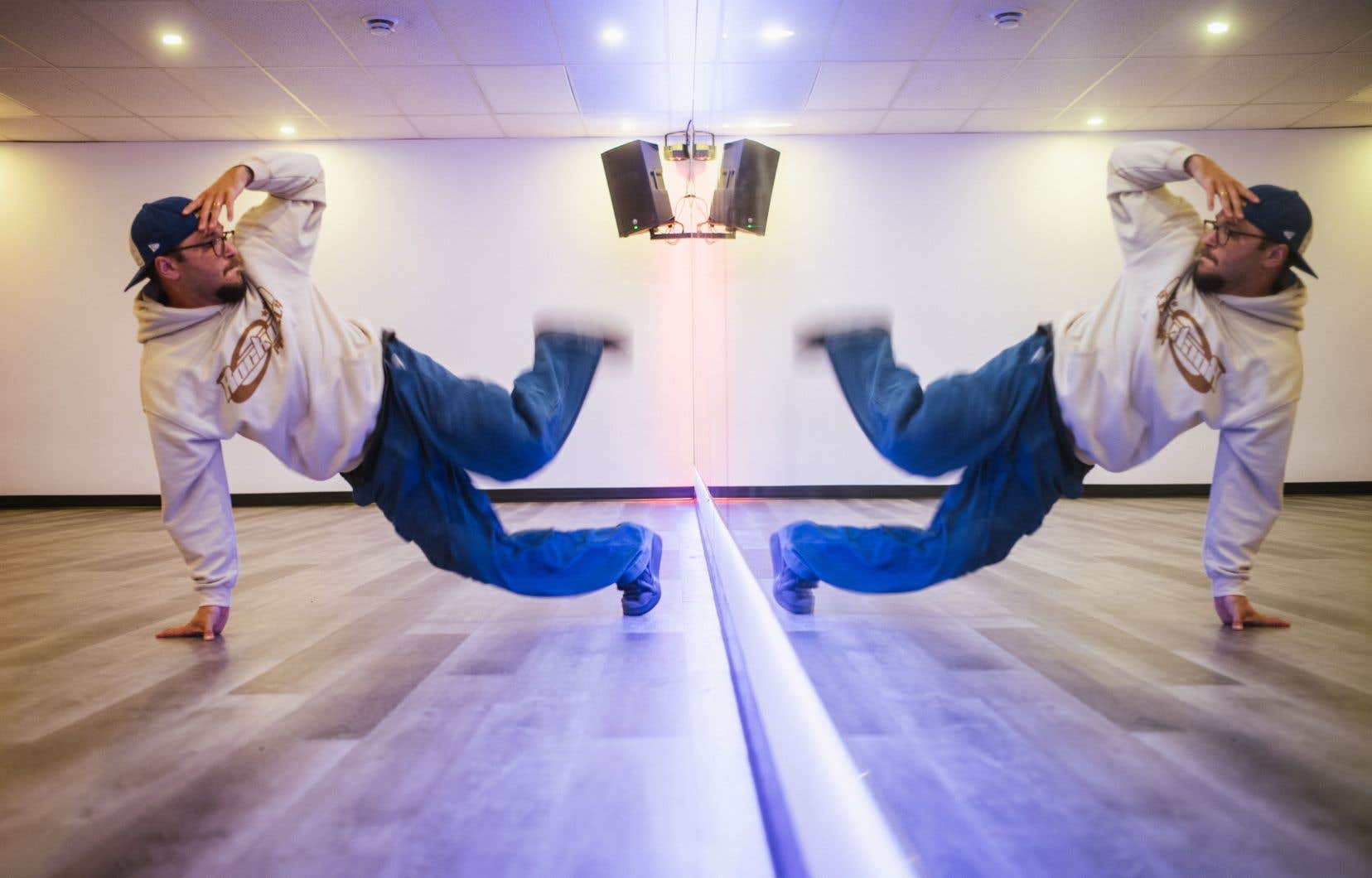THE breaking is set to join the Olympic disciplines at the Paris Games on Friday. Considered more of an art than a sport, does it really have a place in the world’s biggest sporting event? The duty discussed it with local dancers. While they are delighted with the extraordinary exposure their dance will receive, some fear that it will be distorted and reduced to a simple sporting performance.
” THE breaking “To the Olympics? It’s a dream come true!” says Guildo Griffin, who created one of the first schools of breaking of the province, the Studio Party Time, in Quebec.
A few days before the events, his enthusiasm was palpable. It must be said that his passion for this discipline is closely linked to the Olympic Games. “When I saw the b-boys And b-girls “When I was dancing around Lionel Richie at the closing ceremony of the 1984 Olympics in Los Angeles, I thought, ‘This is what I want to do,'” he says.
Forty years later, his discipline is no longer just part of an Olympic spectacle, but is now a competition in its own right. And the cherry on the cake is that Guildo Griffin will be attending the men’s qualifying event in person on Saturday. “It’s historic!” he insists.
In the opinion of his son, Kristopher Griffin — who teaches at his father’s school — the Olympics will help democratize this dance throughout the world. “It will show that it’s not just a discipline underground. THE breaking “will enter the living rooms of many people who would never have been interested in it,” he rejoices.
Dancer Bérénice Dupuis, aka B-nice, agrees. She sees it as an opportunity to “give back to breaking its letters of nobility.” “There are still a lot of prejudices, we still think that it’s a street gang thing,” she regrets. Bringing the breaking at the Olympics, it’s about allowing people to understand this dance and appreciate it.”
Growing popularity
The one who is part of the Canadian national team breaking hopes viewers will watch the events with as much admiration and fervor as they would a soccer or hockey game. “I hope they see the beauty of movement, the infinite creativity behind this art, and that it will inspire young people — and older people — to do it.”
Since the International Olympic Committee (IOC) announced in 2020, the breaking is already enjoying a resurgence in popularity among dance schools. Enrollment at Studio Party Time has increased, and the Griffin family expects another surge this fall.
Alexandre Des Roches, Alex Sugy by his real name b-boyobserved the same phenomenon in a youth competition he organized a year ago. “There were 176 dancers from 6 to 17 years old, it was unheard of. Usually, there are a maximum of a hundred of us in adult professional competitions.” The man who is a dance teacher breaking at the Rockwell Family dance studio in Beloeil, also sees a change in the tone of parents’ discourse. “Suddenly, discipline is more legitimate. It’s becoming serious.”
“Breaking” or “breakdancing”?
Concerns
If they all see positive points in the presence of the breaking At the Olympic Games, some of the stakeholders consulted are worried about seeing their art distorted on screen: will the right vocabulary be used to describe it, will its history and origins be addressed?
There is also and above all this eternal debate: art or sport? “I am afraid that people think that the breaking comes down to performance, competition. […] There’s not a kid who comes into my class and says, “I want to be an Olympic athlete.” They want to learn how to spin on their head, understand how their body moves and can achieve certain positions. breakingit’s about letting go, it’s about having fun. It’s about having fun and meeting a community,” says Alex Sugy.
“For me, it is an artistic discipline above all. The breakingit’s a real culture, there’s a creative, theatrical, musical, community aspect. […] “Reducing it to the sporting aspect, to the physical feat, is very reductive,” adds Bérénice Dupuis. This is why she carved out a place for herself on Team Canada, to ensure that no one forgets this artistic side.
The ABCs of breaking at the Olympics
An Olympic future?
Despite its presence in Paris this year, the breaking will not be on the program for the Los Angeles Summer Games in 2028. “It’s a little disappointing, especially since we have structures in place with Team Canada. But I will quickly come to terms with it. The breakingI prefer it in theaters,” says Bérénice Dupuis.
For Guildo Griffin, the pill is harder to swallow. That doesn’t stop him from dreaming big and hoping for a return of the breaking at the Olympic Games in 2032. “And maybe seeing the impact of the breaking In Paris, the IOC will change its mind by 2028, who knows?
